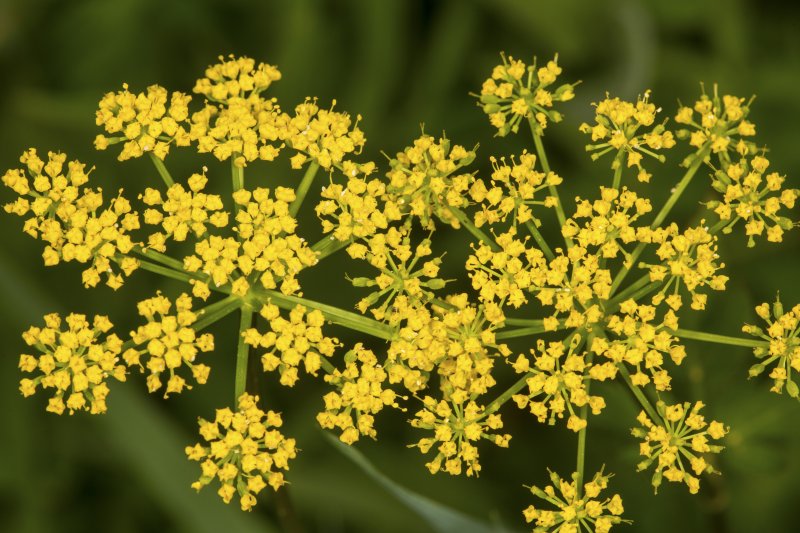Eastern Ontario's roadways and trails are currently awash with a vibrant splash of yellow, courtesy of the increasingly prevalent wild parsnip. While its cheerful appearance might tempt you to gather a bouquet, be warned: this seemingly innocuous plant poses a significant threat to your health and well-being. Wild parsnip is not just another pretty weed; it's a dangerous invasive species capable of causing severe burns, permanent scarring, and, in rare cases, even blindness.
This article delves into the characteristics of wild parsnip, the risks it presents, and what you can do to protect yourself and your loved ones from its harmful effects.
Understanding the Enemy: Identifying Wild Parsnip
Wild parsnip (Pastinaca sativa) is a biennial or short-lived perennial plant belonging to the parsley family (Apiaceae). Originally from Eurasia, it was likely brought to North America by European settlers as a food source. Unfortunately, it has since escaped cultivation and spread aggressively across the continent, establishing itself as a persistent and problematic weed.
Key Identifying Features:
- Height: Wild parsnip typically grows between 1.5 and 5 feet (0.5 to 1.5 meters) tall.
- Stems: Its stems are grooved, hairy, and hollow.
- Leaves: The leaves are pinnately compound, meaning they are divided into leaflets arranged on either side of a central stalk. The leaflets are toothed or lobed.
- Flowers: The flowers are small, yellow, and arranged in flat-topped umbels, resembling a miniature umbrella. These umbels are typically 2-6 inches (5-15 cm) in diameter.
- Root: The root is a thick, fleshy taproot that looks similar to a cultivated parsnip. However, never attempt to eat a wild parsnip root!
- Seed: Wild parsnip produces flat, oval seeds that are easily dispersed by wind, water, and animals.
It's crucial to distinguish wild parsnip from other similar-looking plants. Some native wildflowers share the umbel flower structure, but their flowers are typically white (like Queen Anne's Lace) or other colors. Careful observation of the leaf structure and stem characteristics is key to accurate identification.
The Danger Lurking Beneath: How Wild Parsnip Harms
The true danger of wild parsnip lies in its sap. This sap contains phototoxic compounds called furanocoumarins. These chemicals are harmless on their own, but when they come into contact with skin and are exposed to sunlight (specifically ultraviolet A or UVA rays), they become activated and cause a severe skin reaction known as phytophotodermatitis.
The Chain of Events:
- Contact: The sap comes into contact with the skin, often through direct contact with crushed leaves or stems.
- Sunlight Exposure: The affected area is exposed to sunlight, activating the furanocoumarins.
- Phytophotodermatitis: The activated furanocoumarins cause cell damage, leading to a painful burn-like reaction.
Symptoms of Phytophotodermatitis:
- Redness: The skin becomes red and inflamed, typically within 24-48 hours of exposure.
- Burning Sensation: A painful burning sensation develops on the affected area.
- Blisters: Blisters form, often in linear patterns reflecting how the sap came into contact with the skin.
- Hyperpigmentation: After the blisters heal, the affected area may develop dark pigmentation that can last for months or even years.
- Scarring: In severe cases, the burn can lead to permanent scarring.
The severity of the reaction depends on the amount of sap that comes into contact with the skin, the duration and intensity of sunlight exposure, and individual sensitivity. Children, individuals with fair skin, and those taking certain medications that increase photosensitivity may be more susceptible to severe reactions.
Beyond Skin Contact: The Risk to Eyes
While less common, exposure of the eyes to wild parsnip sap can be extremely dangerous. The furanocoumarins can cause severe inflammation and damage to the cornea, potentially leading to impaired vision or, in rare cases, even blindness. It is critical to avoid touching your eyes after handling wild parsnip and to seek immediate medical attention if you suspect eye exposure.
Prevention is Key: Protecting Yourself from Wild Parsnip
The best way to avoid the harmful effects of wild parsnip is to prevent contact with the plant altogether. Here are some practical tips:
- Learn to Identify Wild Parsnip: Familiarize yourself with the plant's characteristics so you can recognize it and avoid it.
- Wear Protective Clothing: When hiking, gardening, or working in areas where wild parsnip may be present, wear long sleeves, long pants, gloves, and eye protection.
- Avoid Weed Whacking or Mowing: These activities can aerosolize the sap, increasing the risk of exposure.
- Wash Exposed Skin Immediately: If you suspect you've come into contact with wild parsnip sap, wash the affected area thoroughly with soap and water as soon as possible.
- Stay on Marked Trails: Avoid venturing into areas with dense vegetation where wild parsnip may be thriving.
- Educate Others: Inform your family, friends, and neighbors about the dangers of wild parsnip and how to identify it.
Treatment and Management: What to Do if You've Been Exposed
If you develop phytophotodermatitis after exposure to wild parsnip, seek medical attention as soon as possible.
Treatment Options:
- Wash the affected area: Immediately wash the affected area with soap and water.
- Apply cool compresses: Apply cool, wet compresses to alleviate pain and inflammation.
- Topical Corticosteroids: Your doctor may prescribe a topical corticosteroid cream to reduce inflammation and itching.
- Oral Antihistamines: Oral antihistamines can help relieve itching.
- Pain Relievers: Over-the-counter pain relievers such as ibuprofen or acetaminophen can help manage pain.
- Avoid Sunlight: Protect the affected area from sunlight by wearing protective clothing or applying sunscreen.
Control and Removal Of Wild Parsnip
Controlling and removing wild parsnip is crucial to prevent its spread. This is often a task for local authorities or professional land managers. However, if you have wild parsnip on your property, here are some methods you can use (with appropriate protective gear):
- Manual Removal: Digging up the entire plant, including the taproot, is effective but labor-intensive. Be sure to wear gloves and protective clothing.
- Cutting the Root: Cutting the root below ground level can prevent the plant from re-sprouting.
- Herbicide Application: Herbicides can be effective, but should be used with caution and according to the manufacturer's instructions. Consult with a local expert to determine the best herbicide for your situation.
Conclusion: Vigilance is Key
Wild parsnip poses a significant threat to public health and the environment. Its deceptive beauty masks a potent toxin that can cause severe skin reactions and, in rare cases, even blindness. By understanding the plant's characteristics, taking preventive measures, and seeking prompt medical attention when necessary, we can protect ourselves and our communities from the harmful effects of this invasive weed. Stay vigilant, stay informed, and stay safe while enjoying the natural beauty of Eastern Ontario. Remember, a little knowledge can go a long way in avoiding the painful consequences of encountering wild parsnip.
Word Count: 1,274

Ryan Paterson
Ryan Paterson is known for his dedication, innovative mindset, and unique skills that set him apart from the crowd. . From his early years, he displayed a natural talent for thinking outside the box and approaching challenges with a fresh perspective.






Leave a comment?
To write a comment, you must login or register first.